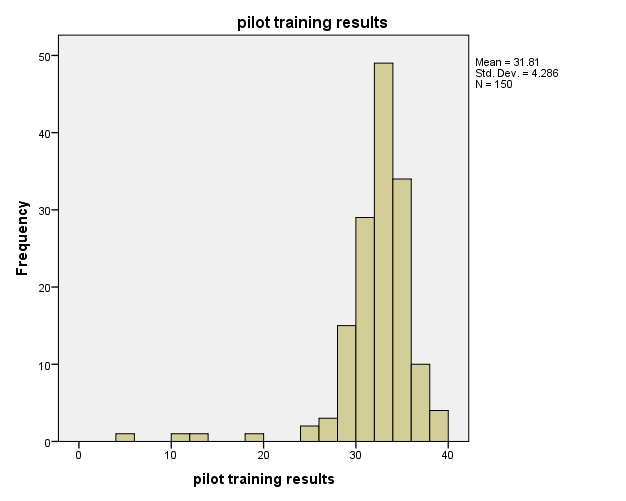Recent times have experienced widespread aircraft cyber-attacks globally. The risks associated with these cybercrimes can be mitigated and combatted through continuous training and knowledge to the crew and pilots. With the discovery of various aircraft safety risks, the aviation industry can overcome these issues by enhancing development strategies and safety measures to strengthen their air traffic and ground operations (Federal Aviation Administration, 2017, para. 2).
The key measures developed by the federal aviation association of America involve training, empowerment, and policy development to the pilots and crew team. When the aircraft team and the pilots have trained adequately on the safety measures and cyber-attacks, there is an involvement in the delivery and efficiency of their operations. There would be a reduced time for the aircraft system due to training the crew and pilots in the aircraft operations (Raju, 2017, para. 4). Therefore, the s study focuses on evaluating the effect of pilots and crew training on combatting aircraft cyberattacks in triple R, Colorado.
Method of Analysis
Research Question
Between 2015-2020, what is the effect of pilot and crew training on combatting aircraft cyberattacks in Triple R, Colorado?
Data Collection
The Federal Aviation Administration (FAA) technical library provides a database for all the aircraft and aeronautics operations in the united states of America that can easily be searched and verified by clicking on the sites. These databases provided ensure an easy and effective search and classification of the data into various groups for easy analysis, interpretation, and presentation. Once the data has been grouped, there is a need to code them effectively through the knowledge of data coding and verification into their appropriate means for analysis and interpretation.
This study has searched data based on the aircraft cyber-attacks and pilot training within Triple R, Colorado, using the time limit between 2015-2020 as reflected in the research question. The key knowledge test expected were generated from various colleges offering such aviation courses and are registered by the FAA. Dataset was strictly on the key tests and their results based on the various colleges and institutions that offered the training. In addition, the dataset was extracted from the performance results of various courses conducted to the crew on the mitigation of frequent cyber-attacks.
These datasets arose from the aircraft operations from Triple, R, Colorado, which formed a basis for analysis of how conducting training to the pilots would affect their understanding and reduce the cyber-attacks (Daniel, 2019, para. 2). The key question the extracted data aimed at responding to is the effect of pilot and crew training on combatting the cyber-attacks experienced in most parts of the world. The involved information data for five years period between 2015 and 2020.
Data Analysis
The data was downloaded in the.XML format and imported into the SPSS program for analysis. The data was discrete since it involved measurable quantitative numerically measurable quantitative statistics. The frequencies of knowledge tests and their results were computed from various data from the colleges for both the pilot and crew training conducted. The data has been arranged in tables to show summaries of means, median, standard deviation, and variances.
The data was run using the analysis section to compare various statistics from the two sets to determine the cumulative distribution from the tables. The results from the dataset were downloaded and saved in the.SAP files, which are easily translated. Table 1 and 2 and figure 1 show the frequencies table and histogram from the analyzed data. T histogram shows the trends in the knowledge results from training the pilots and crew differently and their impact on combating the cyberattacks from the aircraft.
Results
Summary and Conclusions
This study shows that there is a general decline in aircraft cyber-attacks when training is conducted on the pilots and crew. The training knowledge imparted to the pilots and the airline crew accounts for a 78% reduction in the frequent occurrences of these incidents. Wh n the crew is well trained on cybersecurity-related issues, there would be a slow rate of cyber-attacks from the planes as there would be increased knowledge about the basic requirements of air attacks.
In addition, as the knowledge continues growing among the participants in most aviation industries globally, there is a general decrease in cyber-attacks since an organization can control most threats through knowledge acquired. These findings indicate that the continuous government and aviation industry efforts have enabled airline travel to be one of the safest transportation industries. The advanced information technology system in the aviation industry has increased safety and poses advantages in mitigating cyber security threats.
The findings from more reliable plans to mitigate the attacks as the stakeholders are empowered. Continuous training ensures reduced attacks from online sources amongst the key aviation participants. Ho ever, this study is limited since the ability of each participant to conceptualize various cybersecurity threats in detail has not been explained, and this poses a challenge in dealing with the recent attacks.
As experienced in most recent operations, the cyber-attacks involve rapid use of technology which must they must understand in detail and actions are taken appropriately. However, the dataset from FAA does not produce the results statistics of the attacks, and this becomes a problem when analyzing the degree of the occurrence of the attacks. Future studies on this area should focus more on understanding the causative factors and how to mitigate them using the most advanced technological understanding. In conclusion, this study analyzes how imparting knowledge to the aviation industry participants could reduce cybersecurity threats.
References
Daniel, P. J. (2019). Civil Aviation and CyberSecurity. Ho ey-well Aerospace Advanced Technology, 56-59. Web.
Federal Aviation Administration. (2017). Ai craft Cybersecurity: The pilot’s perspective. Aeronautics Association, 1-8.
Raju, P. (2017). Ma aging Cybersecurity Risk in Weapon Systems. Aircraft Systems Authorizing Official, US AIrforce, LCMC, 36-46.
Frequency Tables
